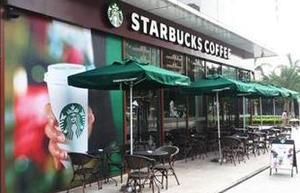Adapting business models to fit China and making products and plans locally relevant have also helped Starbucks succeed in a country that has a deep-rooted tea-drinking culture.
Fifteen years after it first opened a shop in Beijing, Starbucks has more than belied market expectations that beverages other than tea would not sell well in China.
"The coffee shop market has defied the odds and helped convert people who traditionally don't like coffee, and much prefer tea, to accept a product fundamentally based on the ideas of sophistication and cosmopolitanism that the "cafe lifestyle" represents and promotes," said Matthew Crabbe, research director of Mintel Group Ltd, the US-based research firm.
Starbucks entered China in 1999 and has more than 1,200 stores across 68 cities with plans to expand it to 1,500 stores by 2015. "Going forward, there is no doubt that China will be an important and strategic market for us. The future is very bright in terms of how many stores we are going to have (in China). But it is not something that we can take for granted. We have to earn it," said Schultz.
The passionate and humble approach taken by Schultz and his team stands testimony to how the global coffee chain plans to reach out to more customers in China.
Schultz, says he realized his calling when he first walked into a Starbucks outlet in Seattle's Pike Place Market in 1981. Drawn by quality of the coffee and the passion it instills among followers, Schultz joined Starbucks in 1982. In 1983, Schultz went on a trip to Italy, something that he says made a big difference in his life. Captivated by the Italian coffee bars and the romance associated with the beverage, Schultz decided to become a coffee entrepreneur.
To pursue this dream, he left Starbucks and started his own coffee company called Il Giornale. In 1987 he purchased the retail business of Starbucks and expanded the coffee chain aggressively in the US. In2008 Schultz returned as CEO of Starbucks after an eight-year hiatus, and helped steer the company through the global financial crisis. The company currently has more than 20,000 stores across 64 countries and regions.
There are two programs that Schultz says he is immensely proud of - the comprehensive health cover-age for eligible full- and part-time workers and employees and the equity program called Bean Stock, which has been offered to Chinese employees also. "They were built as the foundation of Starbucks culture," he said.
 |
 |
| China's coffee market taking time to brew | Starbucks' pricing furor brings tempest in a coffee pot |
